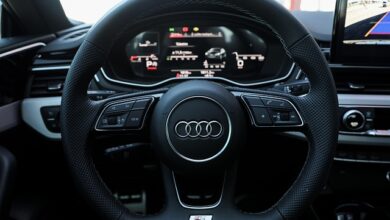How to Choose the Right Deductible for Your Car Insurance in Luxembourg

When purchasing car insurance in Luxembourg, one of the most important decisions you’ll make is choosing the right deductible. A deductible is the amount you agree to pay out-of-pocket before your insurance company covers the remaining costs of a claim. Selecting the appropriate deductible can significantly impact your premium costs and overall financial responsibility in the event of an accident. In this article, we’ll guide you through the process of choosing the right deductible for your car insurance policy in Luxembourg.
What Is a Deductible?
A deductible is the portion of a claim that you are responsible for paying. For example:
- If your deductible is €500 and the total repair cost after an accident is €2,000, you will pay €500, and your insurer will cover the remaining €1,500.
- Deductibles are common in both liability and comprehensive/collision coverage.
In Luxembourg, deductibles are often referred to as “franchise” and vary depending on the insurer and policy type. Understanding how deductibles work is crucial because they directly affect your insurance costs and financial exposure.
Factors to Consider When Choosing a Deductible
Choosing the right deductible requires balancing affordability and risk tolerance. Here are the key factors to consider:
1. Your Financial Situation
- Emergency Fund: Can you comfortably afford to pay the deductible in case of an accident? If you have savings set aside for emergencies, a higher deductible might be manageable.
- Monthly Budget: A lower deductible means higher premiums, which could strain your monthly budget. Assess whether you can consistently afford the premium payments.
2. Risk Tolerance
- How comfortable are you with assuming financial responsibility for smaller claims? A higher deductible shifts more risk to you but lowers your premium.
- Conversely, a lower deductible reduces your out-of-pocket costs during a claim but increases your premium.
3. Driving Habits
- If you drive frequently or in high-risk areas (e.g., urban centers like Luxembourg City), you may be more likely to file a claim. In such cases, a lower deductible could provide peace of mind.
- If you rarely drive or have a clean driving record, a higher deductible might be a better fit since the likelihood of filing a claim is lower.
4. Type of Coverage
- Comprehensive Coverage: Covers non-collision-related incidents like theft, vandalism, or natural disasters. Deductibles for this coverage tend to be lower.
- Collision Coverage: Covers damage to your vehicle from accidents. Deductibles here are typically higher, especially if you own an older car.
5. Value of Your Vehicle
- If your car is older or has a lower market value, it might not make sense to choose a low deductible with high premiums. Instead, consider a higher deductible or even dropping collision coverage altogether.
- For newer or expensive vehicles, a lower deductible ensures you’re protected against significant repair or replacement costs.
Pros and Cons of High vs. Low Deductibles
Understanding the trade-offs between high and low deductibles can help you make an informed decision.
High Deductible
- Pros:
- Lower monthly premiums, saving you money over time.
- Encourages responsible driving since you’ll bear more of the cost in case of a claim.
- Cons:
- Higher upfront costs if you need to file a claim.
- May not be suitable if you lack sufficient savings to cover the deductible.
Low Deductible
- Pros:
- Reduces your out-of-pocket expenses during a claim.
- Provides peace of mind, especially for new or inexperienced drivers.
- Cons:
- Higher monthly premiums, which can add up over time.
- May lead to unnecessary small claims that could increase future rates.
Steps to Choose the Right Deductible
Follow these steps to determine the best deductible for your needs:
Step 1: Evaluate Your Finances
- Calculate how much you can afford to pay out-of-pocket in the event of an accident. This will help you decide whether a high or low deductible is feasible.
Step 2: Compare Quotes
- Request quotes from multiple insurers with varying deductible amounts (e.g., €250, €500, €1,000).
- Compare the difference in premiums for each deductible level to see how much you’d save by opting for a higher deductible.
Step 3: Assess Risk Factors
- Consider your driving history, location, and vehicle usage. For instance, if you live in a busy city with heavy traffic, a lower deductible might be safer.
Step 4: Factor in the Value of Your Car
- Use tools like online car valuation platforms to estimate your vehicle’s worth. If the cost of repairs exceeds the car’s value, it may not be worth insuring for collision or comprehensive coverage.
Step 5: Consult an Expert
- Speak with an insurance broker or agent familiar with Luxembourg’s market. They can provide tailored advice based on your profile and preferences.
Common Deductible Options in Luxembourg
While deductible amounts vary by insurer, here are some typical ranges for car insurance in Luxembourg:
- Comprehensive Coverage: €100–€500
- Collision Coverage: €250–€1,000
- Windshield/Glass Damage: Often has a separate deductible, ranging from €0 to €200.
Some insurers also offer “zero-deductible” options for specific incidents, such as windshield repairs, though these come with higher premiums.
Tips for Managing Your Deductible
Once you’ve chosen a deductible, keep these tips in mind to manage it effectively:
- Build an Emergency Fund: Set aside money specifically to cover your deductible in case of an accident.
- Avoid Filing Small Claims: Frequent claims, even for minor damages, can lead to increased premiums. Only file claims when the repair costs significantly exceed your deductible.
- Example: If your deductible is €500 and the repair cost is €600, it might be better to pay out-of-pocket.
- Review Annually: Reassess your deductible and coverage annually to ensure it still aligns with your financial situation and driving habits.


